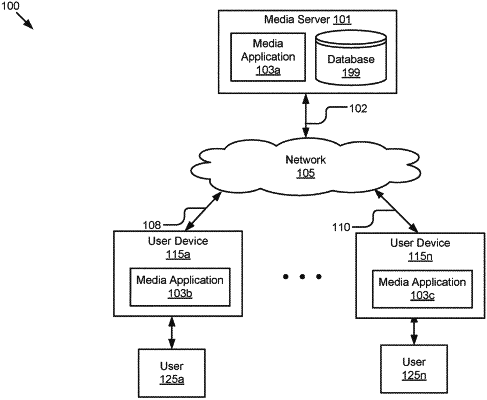| CPC G06F 16/9535 (2019.01) [G06F 16/906 (2019.01); G06F 16/9538 (2019.01); G06F 40/30 (2020.01); G06N 20/00 (2019.01)] | 20 Claims |

|
1. A computer-implemented method comprising:
determining, based on pixels of images or videos from a collection of media items, image embeddings for clusters of media items such that the media items in each cluster have a visual similarity, wherein:
each media item is associated with a location and an associated timestamp,
media items captured within a predetermined time period are associated with an episode, and
the collection of media items is associated with a user account;
selecting a subset of the clusters of media items based on:
corresponding media items in each cluster having the visual similarity within a range of threshold visual similarity values; and
corresponding associated timestamps such that the corresponding media items in the subset of the clusters of media items meet a temporal diversity criteria that excludes more than a first predetermined number of the corresponding media items from the episode;
responsive to a number of the corresponding media items in the subset of clusters including more than a second predetermined number of media items removing one or more of the corresponding media items based on location such that the subset of the clusters of media items meets a location diversity criteria;
causing a user interface to be displayed that includes the subset of the clusters of media items;
receiving aggregated feedback from users for aggregated subsets of clusters of media items;
providing the aggregated feedback to a machine-learning model, wherein parameters of the machine-learning model are updated based on the aggregated feedback; and
modifying the image embeddings for the clusters of media items using the parameters of the machine-learning model with the updated parameters.
|